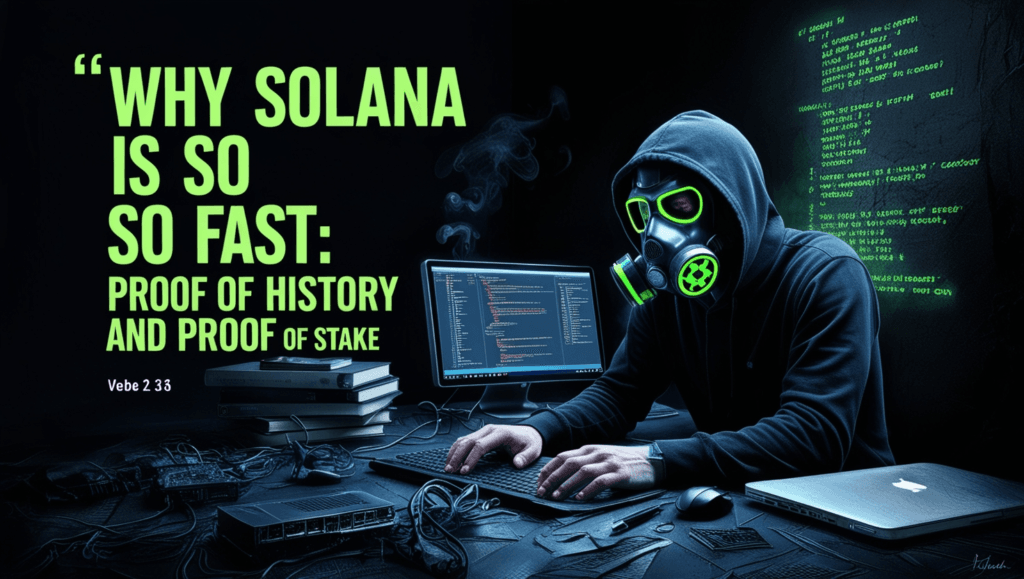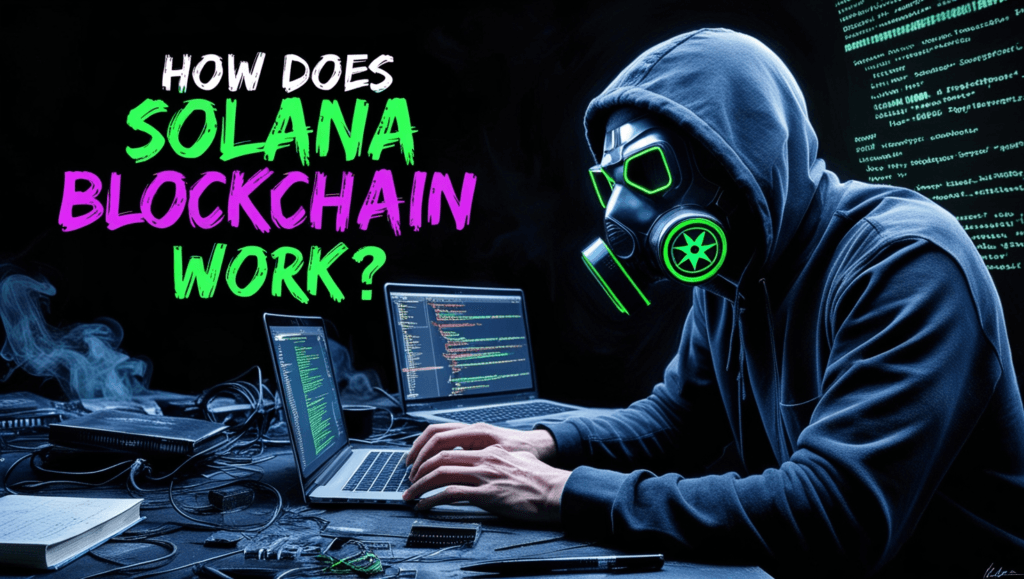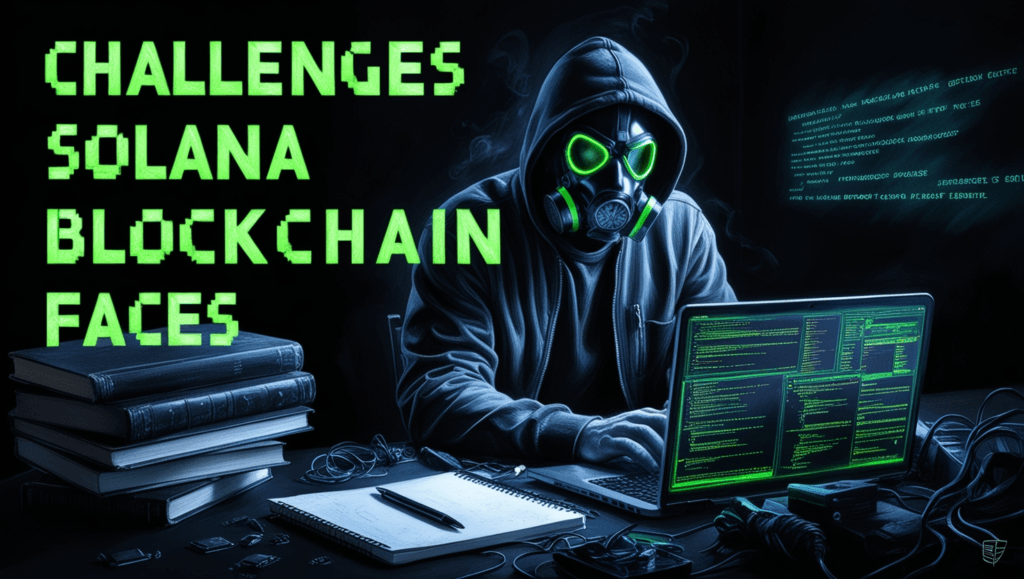Solana Blockchain: Welcome to the world of Solana blockchain! If you’ve heard about it or just stumbled upon the name, you might be curious about what makes it one of the most exciting players in crypto. Today, we’re going to dive into everything you need to know about how Solana works, from its unique technologies to why it’s gaining so much traction. By the end, you’ll know why investing in Solana (SOL) might be something to consider!
Table of Contents
What is Solana?
At its core, Solana is a blockchain network designed for speed, efficiency, and affordability. Created by Anatoly Yakovenko in 2020, it set out to solve a huge problem in crypto: slow transactions and high fees. Picture trying to get somewhere during rush hour; a lot of blockchain networks experience the same “traffic jam” when too many people are using them at once.
But Solana? It’s like a fast lane, processing up to 65,000 transactions per second. That’s no small feat. With its super-low fees (often less than a cent), Solana’s low fees make it perfect for quick trading, NFT transactions, gaming, and all kinds of decentralized finance (DeFi) apps. For developers and crypto fans alike, that’s a big win.
Why Solana is So Fast: Proof of History and Proof of Stake

One of Solana’s secret weapons is a unique technology called Proof of History (PoH). Most blockchains need a lot of computing power to verify transactions, but PoH acts like a timestamp, logging each transaction in order without the need for intense computation. Alongside PoH, Solana uses Proof of Stake (PoS). With PoS, users can stake (or lock up) their SOL currency to help secure the network, earning rewards in the process.
By combining PoH and PoS, Solana transactions per second can reach incredible speeds with minimal energy use, unlike traditional, energy-intensive blockchains like Bitcoin. This efficient approach makes dApps on Solana run smoothly and with low costs.
The Benefits of Solana: Fast, Cheap, and Developer-Friendly
So, what’s all the fuss about? Here’s why Solana’s blockchain stands out:
- Super-Fast Transactions: With the ability to handle up to 65,000 transactions per second, Solana is ideal for applications that need quick, reliable transactions.
- Low Fees: Thanks to Solana’s design, fees stay low, allowing users to make frequent transactions without breaking the bank. That’s why Solana crypto benefits are so attractive to both users and developers.
- Perfect for dApps and DeFi: With decentralized finance on Solana, people can borrow, lend, or earn interest without needing a bank. It’s quick, secure, and accessible, making it a top choice for DeFi and NFTs on Solana.
- Friendly to Developers: Solana’s ecosystem is built with popular programming languages like Rust and C in mind. This flexibility is one reason why more developers are choosing to build on Solana.
Cool Things You Can Do on Solana
Let’s talk about the fun stuff! Solana has an ecosystem that’s growing like wildfire, with plenty of exciting projects to explore:
Solana NFTs and Marketplaces
NFTs (non-fungible tokens) have taken the world by storm, and Solana NFTs offer low fees and high speeds. Magic Eden and Solsea are popular NFT marketplaces on Solana that make it easy to buy, sell, and mint NFTs without losing value to high fees.
Gaming on Solana
If gaming is your thing, Solana gaming projects are paving the way for “play-to-earn” games. A prime example is Star Atlas, a sci-fi game that lets players explore a virtual galaxy while earning rewards. Thanks to fast transaction blockchain technology, Solana handles high volumes of in-game transactions without lag.
Decentralized Finance (DeFi)
Solana has also become a major player in DeFi. Projects like Serum and Raydium make it easy to trade, lend, borrow, and earn interest without needing a traditional bank. The decentralized finance (DeFi) on Solana network is ideal for those looking for efficient, affordable transactions.
Web3 and Beyond
The decentralized web, or Web3, is an emerging trend, and Solana’s network is helping lead the way. With projects like Phantom Wallet and Audius (a music streaming platform), Solana is enabling new kinds of online services that don’t rely on traditional big tech. The Solana blockchain is a driving force in creating a more user-centric internet.
How Does Solana Blockchain Work?

Understanding how Solana blockchain works starts with its unique technologies: Proof of History (PoH) and Proof of Stake (PoS). Together, they make Solana a fast, efficient, and reliable blockchain network.
Imagine Solana as a high-speed train that keeps moving without making unnecessary stops. In most blockchains, each transaction needs verification by multiple nodes (or computers in the network) before it gets added to the blockchain, which takes time. Solana’s Proof of History (PoH) changes the game by adding timestamps to every transaction. This means transactions are logged in an exact order, making it quick and easy to verify.
Alongside PoH, Solana also uses Proof of Stake (PoS). Here’s how that works: users can “stake” their SOL currency (the native token of Solana) to support the network. In return, they earn rewards. PoS keeps the network secure without relying on heavy computing power, making it environmentally friendly compared to other blockchains like Bitcoin.
In simple terms, PoH and PoS let Solana process thousands of transactions per second while keeping fees low. So whether you’re trading Solana NFTs, participating in Solana DeFi projects, or playing Solana-based games, you get a fast and smooth experience.
Solana vs. Ethereum: What’s the Difference?
When it comes to blockchain, you can’t avoid mentioning Ethereum. But how does Solana compare? Here’s a quick breakdown:
| Feature | Solana | Ethereum |
|---|---|---|
| Transaction Speed | Up to 65,000 transactions per second | 15-30 transactions per second |
| Transaction Fees | Less than $0.01 | Varies, often several dollars |
| Development | Supports Rust, C | Solidity |
| Ecosystem Size | Rapidly growing | Large and well-established |
Thanks to Proof of History and Proof of Stake technologies, Solana’s fast transaction blockchain setup gives it an edge over Ethereum for applications needing high speeds and low fees.
Challenges Solana Blockchain Faces

No blockchain is perfect, and Solana has its own set of challenges.
- Network Outages: Solana has faced some downtime due to high network demand, which can be frustrating for users. However, the Solana team is working to ensure the network remains stable even during peak times.
- Centralization Concerns: Some worry that Solana blockchain is less decentralized than it could be, as there are fewer validators compared to Ethereum. This is something the community is keeping an eye on as Solana grows.
What’s Next for Solana?
The future looks bright for Solana Blockchain. Here’s what’s on the horizon:
- Improved Stability: Solana is focused on ensuring the network remains stable, especially as more people begin investing in Solana (SOL) and using the platform’s various apps and features.
- Expanding the Ecosystem: With grants and incentives for new developers, Solana’s ecosystem will keep growing, attracting more projects and users. A larger ecosystem will strengthen Solana’s position as a go-to for blockchain solutions.
- Better Tools for Users and Developers: Wallets and dApps on Solana are improving, with tools like Phantom making it easy for everyday users to dive into the world of crypto.
Investing in Solana (SOL)
If you’re thinking about investing in Solana (SOL), here are a few things to consider:
- Price Volatility: Like other cryptos, SOL currency can be volatile. Be prepared for the highs and lows.
- Growth Potential: With Solana’s ecosystem expanding, SOL may increase in value as more users join the network.
- Staking Rewards: If you hold SOL, you can earn rewards by staking it. This lets you support Solana’s network while earning passive income.
Wrapping Up: Is Solana Blockchain Right for You?
Whether you’re a developer, investor, or just curious about blockchain, Solana Blockchain has something special. It’s fast, low-cost, and home to a thriving ecosystem of dApps on Solana Blockchain in fields like NFTs, gaming, and DeFi. With a blend of Proof of History and Proof of Stake, Solana stands out from competitors like Ethereum.
Solana’s journey is just beginning, and as the network grows, it will continue to play a key role in the future of blockchain. So, whether you’re looking to build, invest, or just explore, Solana blockchain might just be the adventure you’re looking for!


